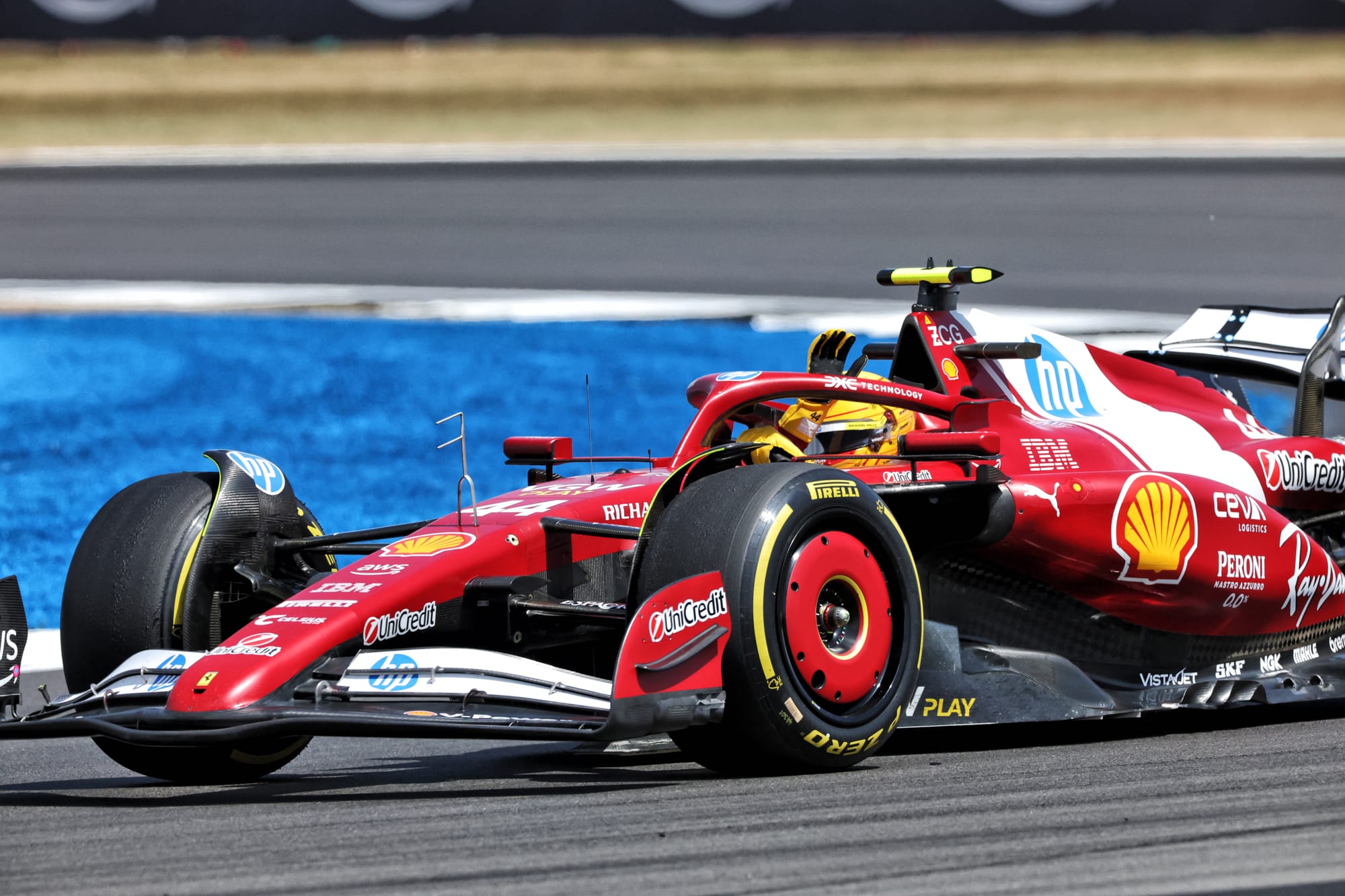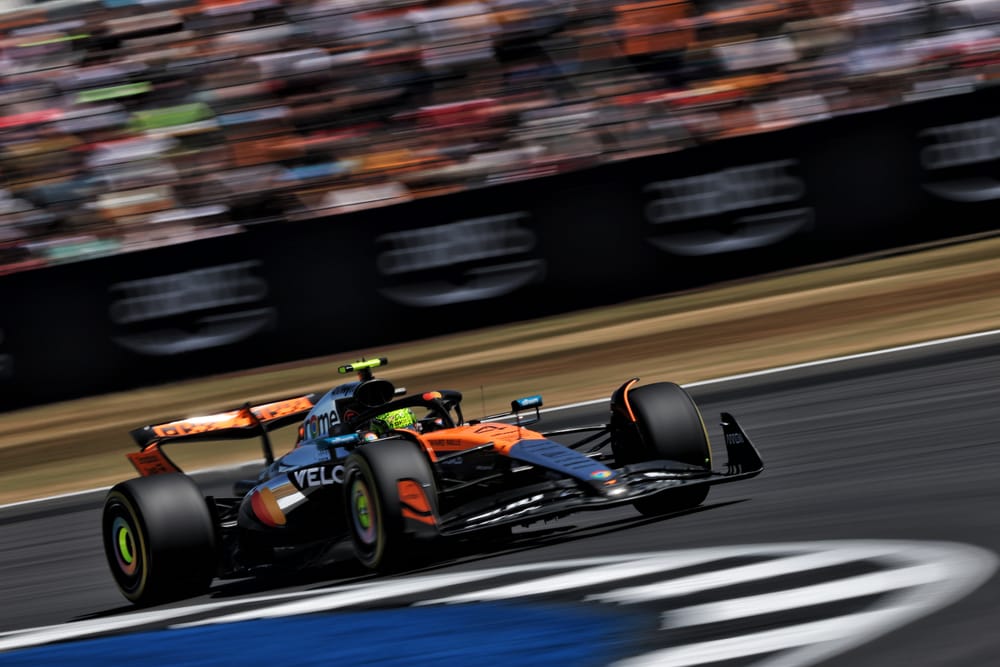Watching first practice trackside at the British Grand Prix at Brooklands, the left-hander at the end of the Wellington Straight, offers a glimpse of what makes the McLaren such a good Formula 1 car.
It’s so clear you can see it, hear it, and almost feel it when you get close to the cars.
They approach this corner with a huge amount of speed after the long straight, but in the first part of the corner, there are really only subtle differences between cars. Maybe some are able to be slightly more committed on the brakes or have a little more understeer, and it requires a bit more work to get the car to the apex, and even small variations there can cost time, but it’s the exit phase that caught the eye.
To be precise, it’s all about the driver getting on the throttle. In a good car, you can get on it that bit earlier because you’ve got the grip and the car is rotating better through the corner, but in slightly less good cars (because there’s no bad cars in F1 these days), you have to be more hesitant.

It’s no surprise that the McLaren, which has won all but three grands prix this year, allows Oscar Piastri and Lando Norris to get on the power early – but what really caught my eye is how aggressive they can be. As we know, the McLaren looks after its rear tyres really well and controlling those temperatures is playing a big part in this. And while you see other drivers struggling more as the rears overheat, the McLaren drivers seem to be able to keep the Pirellis working and still have plenty of rear grip to use to get on the power.
It's just one corner, but as Brooklands is so long, this is an area where the differences from car to car are more pronounced so it is one of those corners that shows those watching the strength of the McLaren more than most.
Lewis Hamilton also caught the eye for different reasons. He seemed to be struggling with a little understeer into the corner and never really found a way to get around that. Yesterday, he talked about Charles Leclerc favouring an understeering car, which is an unusual thing to say as usually he doesn’t.
But maybe this reflects that there is some rear instability that Hamilton isn’t so comfortable with because understeer can also come from a driver being more conservative on entry to keep the rear in check if it does not give him that confidence on turn in.

Hamilton has a clear favoured way to drive and always works to make the car work with it, but is trying to change that given he’s experimented and drawn blanks on all other directions, but he’s still not there with it. That said, he was quick in FP1. But the very best drivers, Michael Schumacher and the rest, always did what they could with the car they had on Sunday afternoon. Lewis does the same, but sometimes the car just doesn’t respond to what it is that makes him so quick.
It’ll be interesting to see how that evolves through this weekend after an Austria weekend where he was not too far off Leclerc’s pace.
With such a condensed field, there’s only small differences as you work your way down the order and it really is all about when you can get on the throttle. But I’d pick out the Alpine as the car struggling most with both Pierre Gasly and Franco Colapinto having wobbles. That’s not about poor balance, just sheer lack of grip – and therefore, that means it’s not carrying enough downforce.
All of this is just FP1 but if I were in the McLaren garage, I’d be feeling pretty happy about life.



